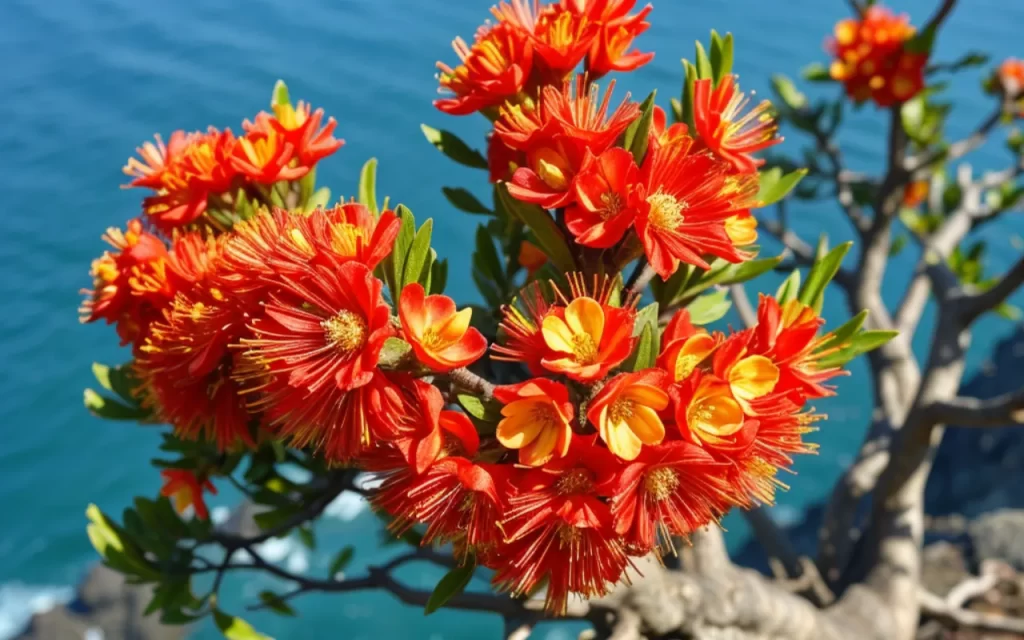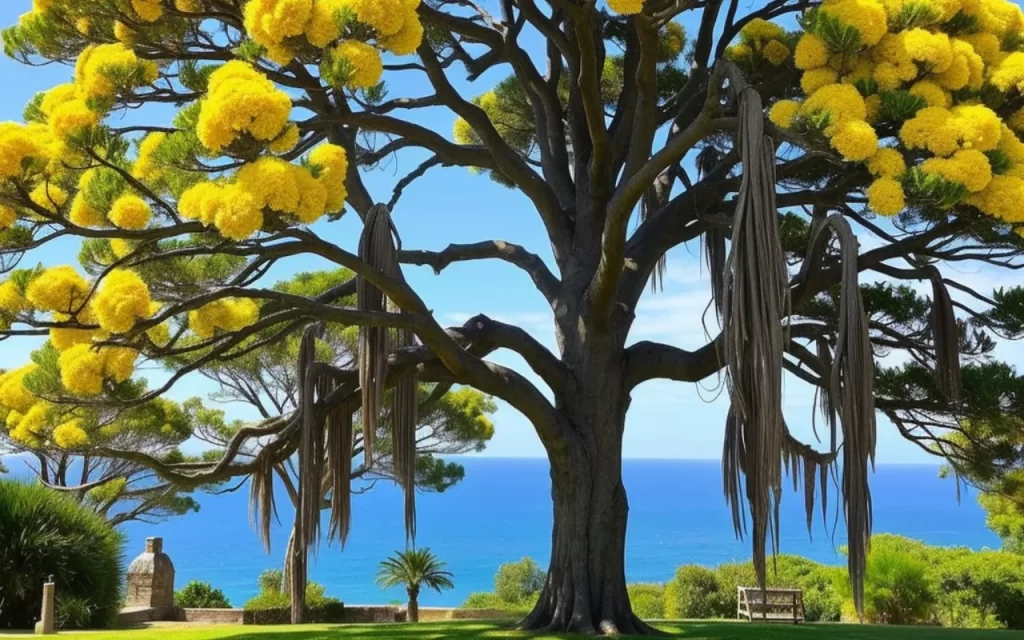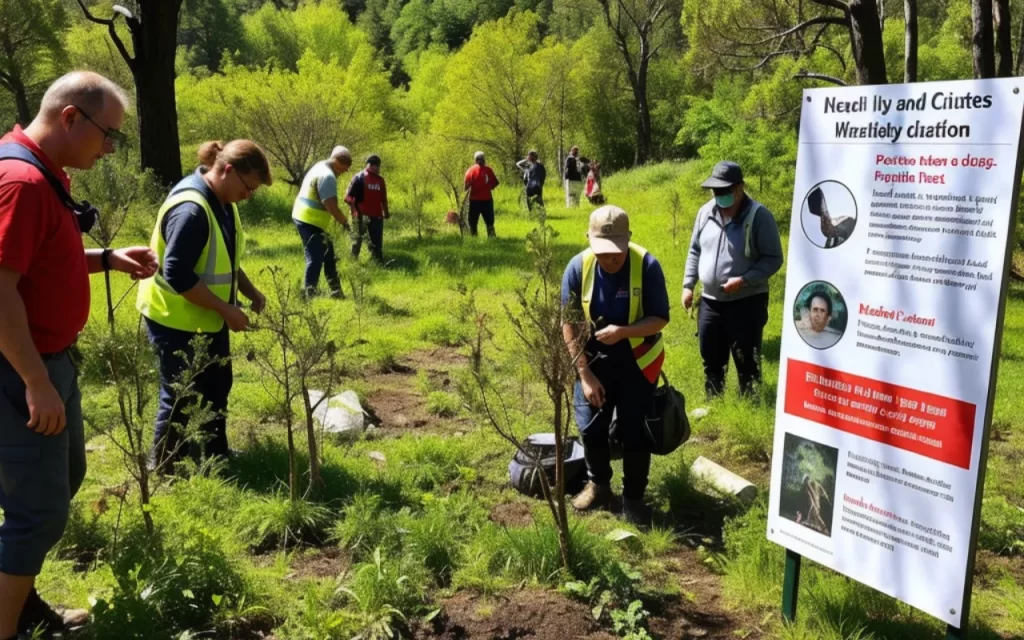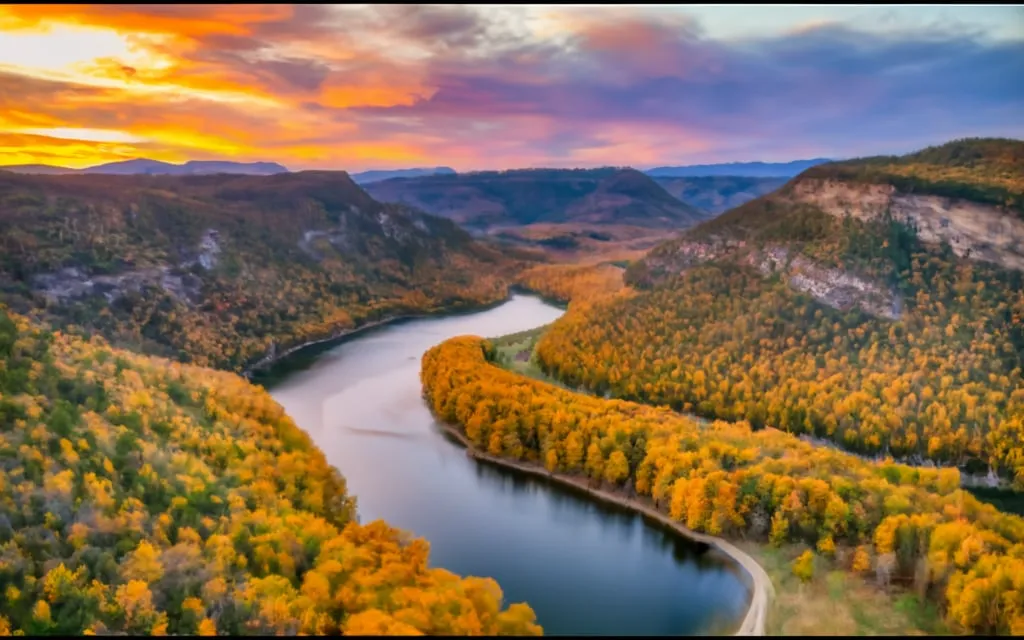The pōhutukawa is an incredible tree that has earned its place as the New Zealand Christmas tree. This Metrosideros excelsa, also called the iron tree, belongs to the myrtle family (Myrtaceae) and is well-known for its vibrant and stunning red, orange, yellow, and white flowers. These flowers, with their distinctive stamens, bloom around Christmas, adding a splash of color to the coastal regions of New Zealand. Endemic to the country, is celebrated not just for its beauty but also for its resilience, as it can survive in rocky, precarious cliffs, symbolizing the strength and culture of the Māori people, who revere it as a chiefly tree (rākau rangatira).
Sacred Trees
The pōhutukawa is more than just a tree; it holds a deep spiritual significance in Māori culture, where it is connected to the legendary warrior Tawhaki. This small yet mighty tree is believed to be a divine symbol, representing the blood of Tawhaki, who fell to earth in his quest to avenge his father’s death. One of the most revered trees stands on the cliffs of Cape Reinga, where it is thought to be over 800 years old. This ancient tree guards the entrance to a cave, which is said to be a passageway for the spirits of the dead as they journey to the afterlife. The pōhutukawa is thus seen as a massive refuge and shelter for travelers between worlds, a sacred connection between the living and the dead, deeply revered in Māori traditions.
Threats to Pohutukawa and Rātā:

The Impact of Possums
The pōhutukawa and rātā trees face severe threats from the introduced possum populations, which have significantly impacted the delicate forest ecosystem in New Zealand. These species are particularly vulnerable as the possums have a strong preference for browsing on their leaves, causing the trees to suffer from sustained damage. Mature trees can begin dying within just three years of continuous browsing, and even younger trees are at risk of death if the pressure continues. The browsed trees lose their canopy, which leads to further exposure to windthrow, insect damage, and diseases. This chain reaction deeply harms the forest ecosystem, affecting not only rātā but also the overall health of the environment they support.
Also Read: Patchouli: Oil Unlock The Secret to Timeless Beauty and Wellness
Myrtle Rust
Myrtle rust is a severe fungal disease that has become an emerging threat to New Zealand’s native pōhutukawa and rātā trees. Since becoming established in the country, this disease has posed a significant risk to the Myrtle family (Myrtaceae), which includes both these iconic species. Myrtle rust affects the health of the trees, attacking young shoots, leaves, and buds, and can eventually compromise their survival. The spread of this disease is a growing concern, as it has the potential to cause widespread damage to these treasured trees, undermining efforts to conserve them.
Human Impact and Other Threats
Human activities have significantly contributed to the decline of pōhutukawa and rātā trees. Actions such as breaking off branches for firewood, lighting fires beneath these trees, and parking vehicles over their delicate roots have caused substantial harm. These activities not only damage the trees directly but also increase the risks to their long-term survival. Additionally, invasive weeds and grasses pose a significant threat by smothering young seedlings, inhibiting their regeneration, and preventing these iconic species from flourishing as they naturally would.
Conservation Efforts

Conservation efforts to protect the pōhutukawa and rātā trees are crucial in ensuring their survival. The Department of Conservation (DOC), in collaboration with organizations like Project Crimson, is actively involved in restoring the natural habitats of these trees. Through educational and revegetation programs, these entities work tirelessly to reverse the decline of these species, mainly by controlling the possum populations that pose a significant threat. DOC and other agencies also engage in ongoing research and monitoring efforts to assess the impact of myrtle rust and other threats, aiming to develop effective strategies for long-term preservation.
The Origins: A Name with Deep Roots
The name Metrosideros excelsa, commonly known as pōhutukawa, has its roots in ancient languages. The genus name Metrosideros is derived from the Ancient Greek words mētra, meaning “heartwood,” and sideron, meaning “iron,” reflecting the tree’s strong and durable nature. The species name excelsa comes from Latin, meaning “highest” or “sublime,” which aptly describes the tree’s majestic presence. The term pōhutukawa itself is a Māori word, with its closest equivalent in other Polynesian languages being the Cook Island Māori word pohutukawa, which refers to a coastal shrub with white berries known as Sophora tomentose. The -hutu- part of the word traces back to futu, the Polynesian name for the fish-poison tree (Barringtonia asiatica), which bears flowers similar to those of the pōhutukawa.
The Unique Characteristics
The pōhutukawa is a striking tree, easily recognized by its yellow-flowering Aurea cultivar and its ability to grow up to 25 meters (82 ft) high with a spreading, dome-like form. Typically, these trees have multi-trunked structures, with their trunks and branches often adorned with matted, fibrous aerial roots. The oblong, leathery leaves of the pōhutukawa are particularly distinctive, with dense white hairs covering the underside.
Distribution

The pōhutukawa (Metrosideros excelsa) naturally grows in the coastal regions of New Zealand’s North Island, mainly north of a line stretching from New Plymouth (39° S) to Gisborne (38° S). Historically, it formed a continuous coastal fringe along these areas, but by the 1990s, pastoral farming and introduced pests had reduced these forests by over 90%. The tree also occurs naturally along the shores of lakes in the Rotorua area and Abel Tasman National Park at the top of the South Island.
The pōhutukawa is renowned for being a cliff-dweller, often found clinging to precarious, near-vertical situations. It shares a remarkable ability with its Hawaiian relative, the ʻōhiʻa lehua (M. polymorpha), to colonize lava plains. A notable example is Rangitoto, a volcanic island in the Hauraki Gulf, where pōhutukawa have thrived, showcasing their resilience and adaptability in such challenging environments.
Conservation
The conservation of pōhutukawa and rātā is vital to preserving New Zealand’s natural heritage. These iconic trees are under constant threat from both natural and human-induced factors, making conservation efforts crucial. One of the leading forces in this battle is the Project Crimson charitable trust, which focuses on reversing the decline of these species. Their mission is to ensure that pōhutukawa and rātā continue to flourish in their natural habitat and remain cherished icons in the hearts and minds of all New Zealanders.
Final Thoughts
The pōhutukawa tree is much more than just a beautiful addition to the landscape; it is a symbol of resilience, cultural heritage, and natural beauty in New Zealand. From its vibrant flowers that bring color to the coastline to its significant role in Māori traditions, the pōhutukawa holds a special place in the hearts of New Zealanders. The ongoing conservation efforts are vital in ensuring that this iconic tree continues to thrive despite the various threats it faces, from human impact, possum browsing, and myrtle rust.
FAQs:
What is the pōhutukawa tree?
The pōhutukawa is a coastal evergreen tree native to New Zealand, known for its vibrant red, orange, yellow, and white flowers. It’s also called the New Zealand Christmas tree.
Why is the pōhutukawa important to Māori culture?
The pōhutukawa is considered a chiefly tree (rākau rangatira) in Māori culture, symbolizing strength and beauty, and is connected to spiritual legends.
What threats do pōhutukawa trees face?
Pōhutukawa trees are threatened by possum browsing, myrtle rust, and human activities like breaking branches, lighting fires, and damaging roots.
How is pōhutukawa wood used?
The dense, strong wood of the pōhutukawa is used for making small, heavy items and in traditional Māori healing practices.




